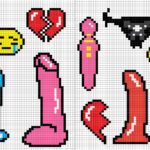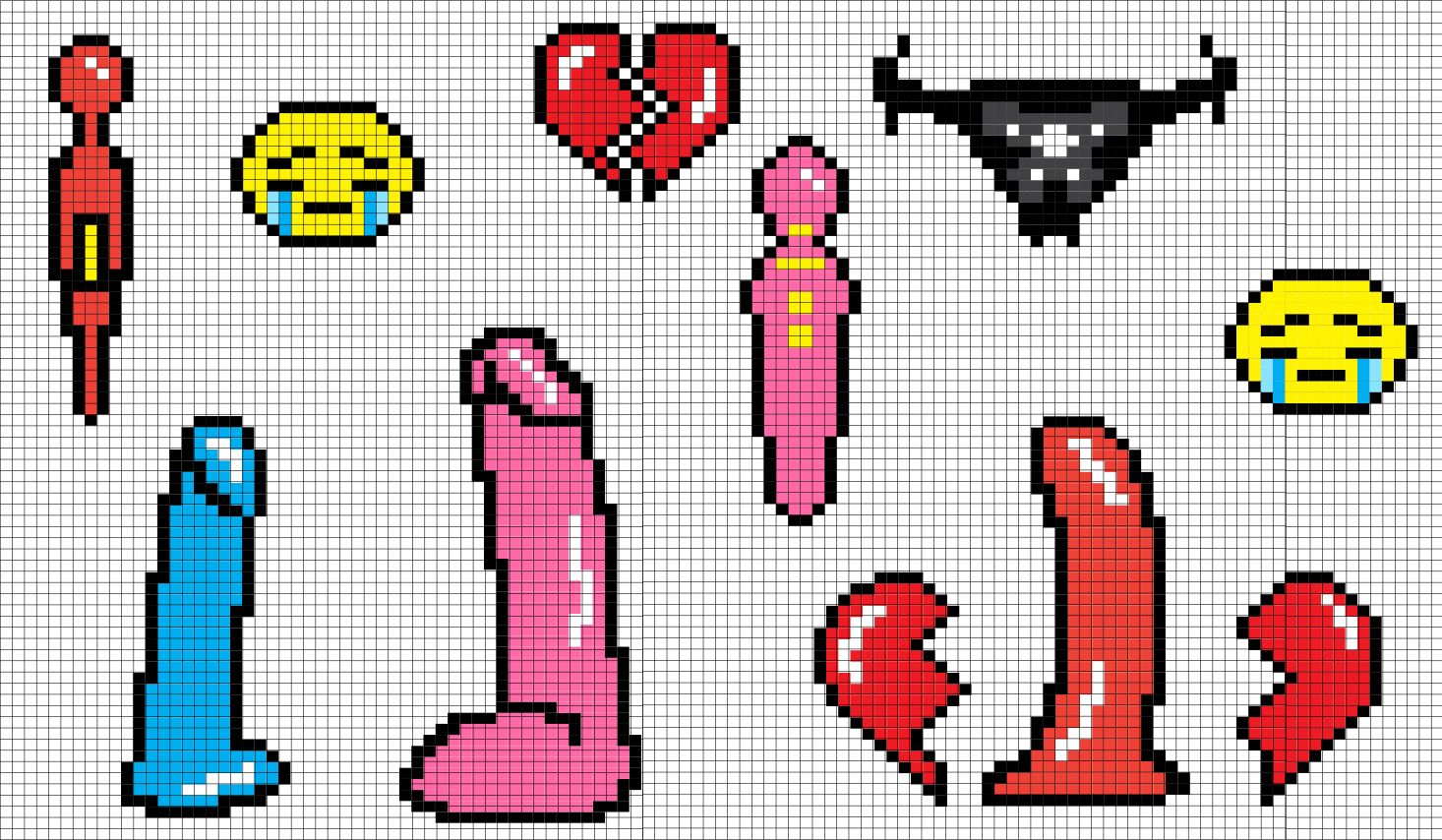Sapphic breakup etiquette 101: what should you do with the communal sex toy box?

For some corners of the queer community, getting dumped leads to one particularly divisive dilemma: deciding what to do with the strap-ons and vibrators you’ve used as a couple.
WORDS BY KATIE BASKERVILLE
HEADER DESIGN BY ANISA CLEAVER

Throwing myself onto my bed and sobbing like Scarlett O’Hara has always been my post-break-up routine. I genuinely believe that this level of theatrics is a measured and proportionate response when your heart has been dashed against the rocks. I’m a romantic and a Scorpio – what can I say?
I also believe that after said bed-throwing, all reminders; cinema tickets, polaroids, love notes and sex toys – everything that’s ever reminded you of an ex, should be chucked into a black bin bag, never to be seen again. So while you might not see me handing back a big bag of dildos at The Planet like Alice from The L Word, you will find me crying while trying to unscrew the wall dildo à la Suki from Drive Away Dolls. I am not sorry.
However, Gigi Engle, a COSRT-registered sex and relationships psychotherapist and sex expert for the LGTBQIA+ app Taimi, tells me that this approach might not be helpful in the long term. “While we might want to throw things out because they’re imbued with a lot of meaning, you might want to look back on things once the dust has settled. But this is totally subjective to you and how your relationship ended,” she explains.
So it makes sense that getting rid of the communal strap-on can be an intensely emotional aspect of queer breakup admin. “I basically had a breakdown,” says Zöe Davies, 27, from Lincolnshire. “My partner and I had been together for five or so years so divvying up the sex drawer was a really heart-wrenching task. There were a lot of good memories there.”
Davies tells GAY TIMES that when she and her partner separated, they decided to chuck the shared toys but keep the toys bought for themselves, even if they had been used in partnered sex, “It just seemed right to split it that way. I’d have felt so weird about someone new using a strap we’d used together, and I’d feel properly weird about wearing one of ours [with someone new].”
When it comes to using a strap that belonged to someone else, I know how Davies feels.
I found myself in my first queer situationship at around 26 or 27 years old. I can’t recall exactly. However, upon finding a stash of sex toys in their cupboard that had been used with other girls and in past relationships, I felt kind of icky.
I know that this initial reaction of ‘put-that-thing-back-where-it-came-from-or-so-help-me’, was partly born from my socialisation as a hetero-presenting person (I didn’t openly come out as bisexual to my friends and family until I was 29 – but that’s another story), in addition to the heteronormative and monogamous lens I was taught to view the world through. Things are much different now.
But back then I didn’t want to have sex with these toys, even though they were sterilised and clean. It felt like sharing an intimacy I had no part in. It never crossed my mind that a strap-on could have been an extension of the person I was fucking, or that I could wear one, suck one or stroke one… When I look back, it all seems pretty narrow and short-sighted on my part but, please, afford me baby-gay privileges here.
But the whole scenario begs a couple of serious questions. I wouldn’t have felt weird about bringing my own solo-sex toys into the bedroom to share – so why did the thought of a dildo that had once been used with someone else make me flinch?
In philosopher Paul B. Preciado’s Counter Sexual Manifesto, he philosophically questions the role of the dildo in mixed-sex, same-sex and group sex settings – as well as in the context of heterosexual sex and queer sex. And, in doing so, he discusses why some of the discomforts we feel have nothing to do with the sex toy itself, but with its imbued meaning.
For example, in lesbian-only spaces, the dildo has historically been a bone of contention as it’s proposed to be representative of an invasion of men. In the same vein, the exact same dildo might be perceived by others as a path towards gender euphoria, or a tool for power play.
This is perhaps why we find it difficult to recycle some toys with other partners after a breakup. These pieces of silicone have accumulated emotional energy and meaning in our hearts and minds, coming to represent the intimacy of a prior relationship. And, let’s face it, being reminded of heartache is arguably the last thing you want to be thinking about when you’re about to sleep with someone new.
This is how Ella Walker, 25, from Bristol, feels. Walker tells GAY TIMES that for her, using a strap from an old relationship would make her feel strange and that she usually throws them out post-breakup. This is partly because Walker chooses straps with partners. “I think buying a strap with your partner and having those experiences together can be a really fulfilling experience for both of you,” she says.
Walker equally split the communal sex toys with her partner when they broke up. She describes this as “kinda sad” because in doing so, they both realised that they “had big horny dreams and a lot of them never happened.” But, she still holds onto toys with good memories attached to them.
For *Laura, 26, (who has asked to remain anonymous), straps and sex toys, generally, are tools of pleasure and power – rather than something they associate with particular relationships or partners. “My strap is just as much for me as it is for other people to be honest,” they say. “It’s about feeling powerful and dominant.”
There’s also the cost element. “Throwing out sex toys seems wasteful too,” Laura continues, “If I paid for it, or my ex doesn’t want it, then why would I throw it out? Straps are expensive.”
Laura explains that, for them, there’s no emotion for another person attached to their strap or dildos — rather, they’re a way for them to express their interest in BDSM power exchanges and the gender fluidity in their identity.
Bima Loxely, a sex and relationship therapist, explains that for other gender non-conforming people, straps can be a gender-euphoric experience which extends to “the look, the feel, the texture and power play” of the strap in question.
The truth is, straps have been around since time immemorial – literally. The first historical documentation of a strap-on was during the Upper Palaeolithic period, (a.k.a the Stone Age), about 30,000 years ago. And, in sapphic relationships, they’ve long signified power exchanges, pleasure and, sometimes – but not always, masculine energy.
However, if you are looking to keep your strap-on collection intact from partner to partner, hygiene and toy care are a must. Each material will have its own cleaning requirements, depending on whether they’re porous or not.
Whatever straps, vibes and dildos mean to you and the relationships you have, the takeaway, for me at least, is that there’s no shame in shedding a tear or two over splitting up the sex toy collection, keeping the toys that have meaning or purpose – or binning it all completely to start afresh.
So you do you – just keep it clean.
* Name has been changed.
The post Sapphic breakup etiquette 101: what should you do with the communal sex toy box? appeared first on GAY TIMES.
Go to Source
Author: Katie Baskerville
